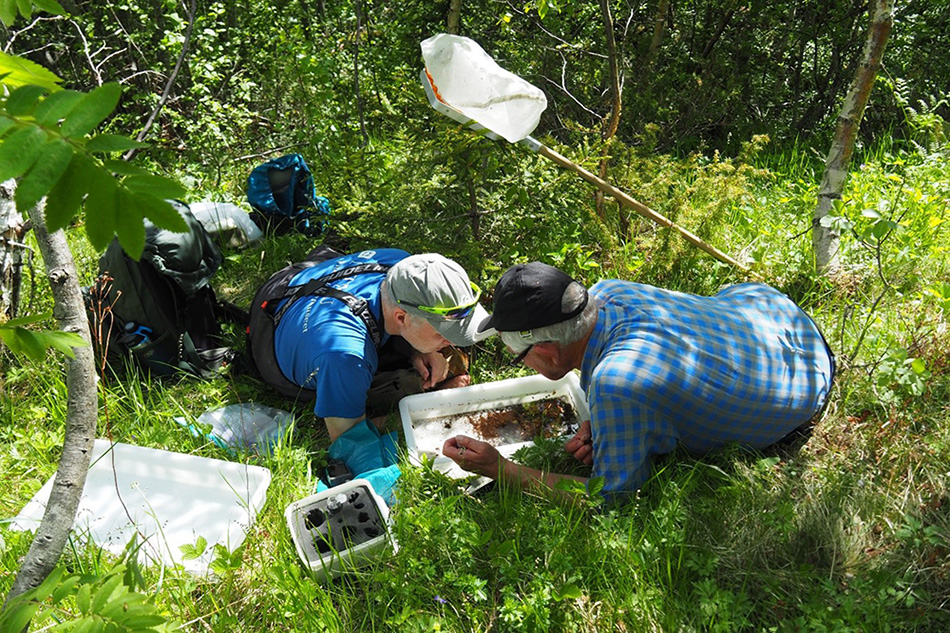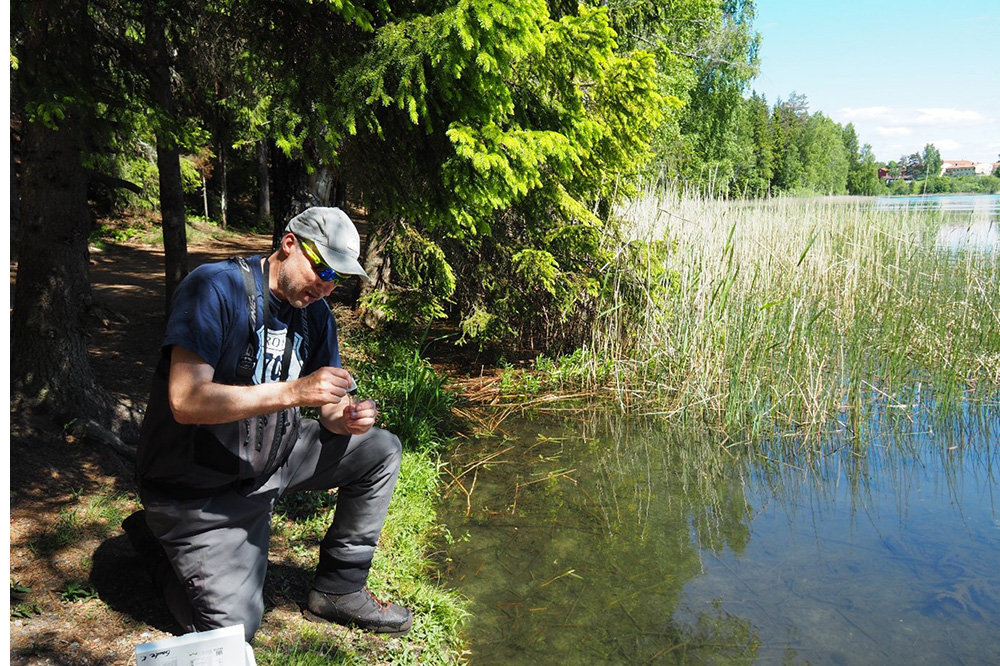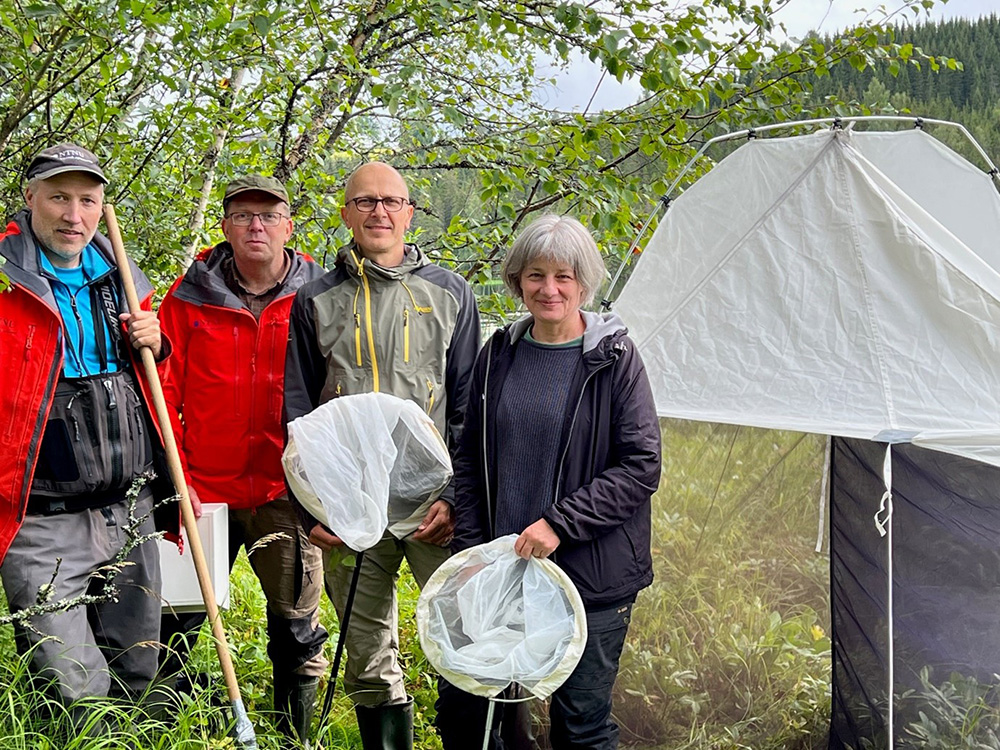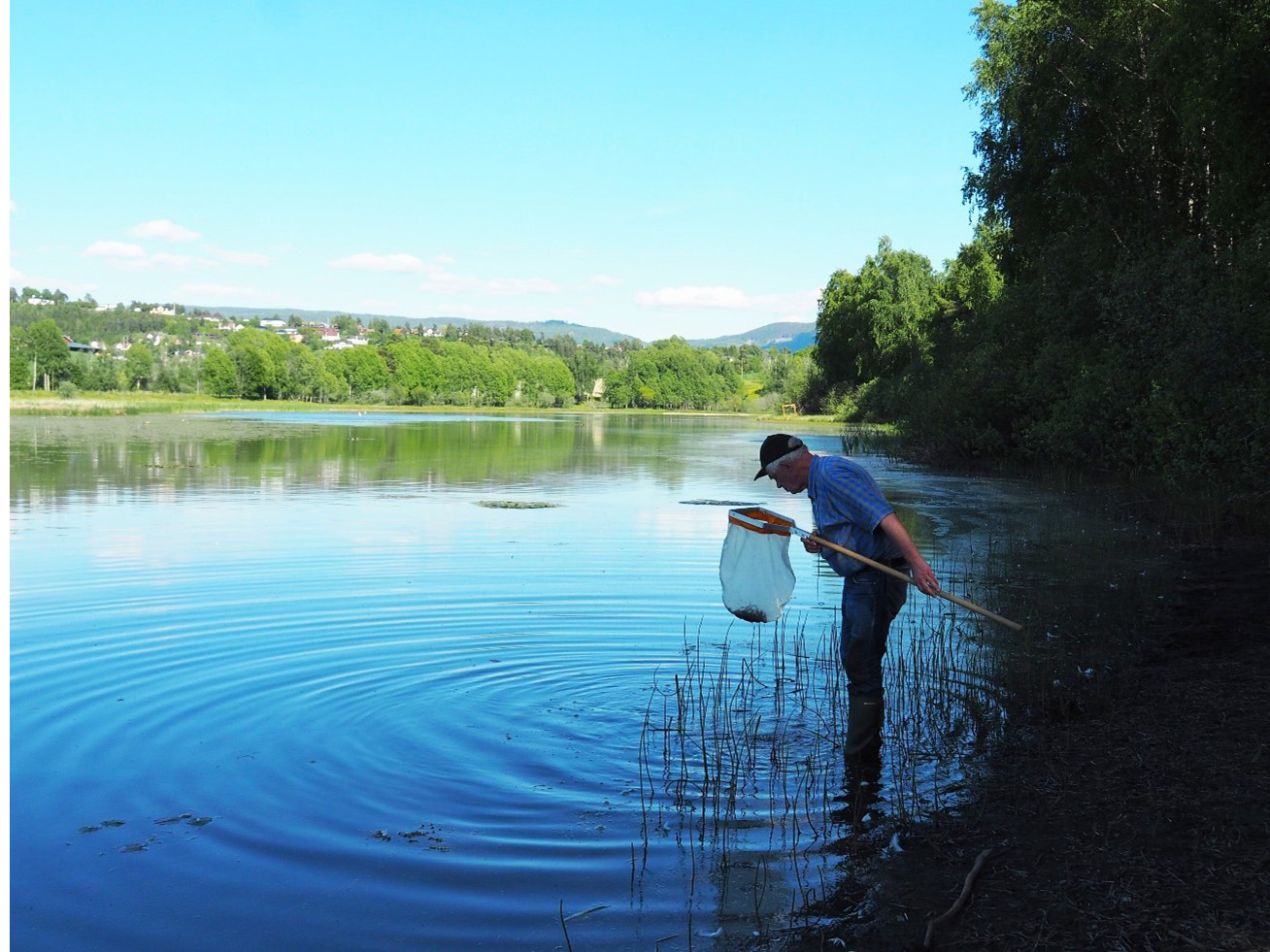Water mites and non-biting midges in calcareous water bodies
Water mites and non-biting midges in calcareous water bodies
Even though calcareous water bodies are known for their characteristic fauna and flora, there are organism groups that are poorly inventoried in these habitats in Norway. In this project we investigate two such groups, namely water mites and non-biting midges, and survey their species communities in around 100 calcareous water bodies in South-, Central- and North Norway. The recorded species are linked to nature types, DNA barcoded and incorporated in the scientific collections at the NTNU University Museum. We expect to find about 150 water mite and 150-200 non-biting midge species, of which in total 30-40 species likely will be new to Norway.
Freshwater mites within the order Trombidiformes, and flies of the dipteran family Chironomidae (non-biting midges) share many of the same habitats, including those influenced by calcareous bedrock and limestone deposits. Strongly calcareous ponds and small lakes, and calcareous bogs and fens are listed as vulnerable in the Norwegian Red List of Nature Types and calcareous lakes are among the specifically selected nature types for conservation following the Norwegian Nature Biodiversity Act due to their unique fauna and flora. However, little is known about the potentially characteristic mite and midge fauna in these waters in Norway, except that they can be very species rich. Where calcareous water bodies have been investigated for these groups outside of Norway, often characteristic and even endemic species are found, especially associated with springs. Even in monitoring programs specifically targeting calcareous freshwater habitats, chironomids and water mites are not included despite their high potential as environmental indicators.
Given the high diversity and importance of water mites and chironomids in calcareous freshwater ecosystems, our project will likely produce a considerable amount of new information and fill both knowledge- and barcode-gaps in the Norwegian fauna. We expect that this project will contribute considerably to the knowledge of species distributions and likely record a high number of species new to Norway.
Project goals
The main goal of this project is to increase the knowledge of Norwegian water mites and non-biting midges associated with calcareous freshwater habitats, and provide geo-referenced, barcoded, and vouchered collections of Norwegian species. To achieve this, we will:
- Collect and identify water mites and chironomids from calcareous freshwaters throughout Norway.
- Provide DNA barcodes of all collected species.
- Contribute to knowledge transfer from experienced international experts to Norwegian researchers.
- Resolve taxonomic inconsistencies in BOLD regarding Norwegian water mites and non-biting midges.
Collecting midges and mites
Non-biting midges and water mites largely occupy similar habitats. In fact, many water mite species are even relying on chironomids for food and transportation among suitable water bodies. It is therefore practical to organize fieldwork to collect both organism groups. We have already sampled at multiple localities in southern, central and northern Norway and taken measurements of conductivity, pH and Ca2+ - content. Insects and mites are collected with aerial nets, water nets and Malaise traps.




More about the organisms
Water mites

Freshwater mites have a fascinating life cycle. Preadult stages include a larval stage parasitic on adult (rarely larval) freshwater insects, in general showing the same prey preference as adults. At species level, populations of the same species may prefer different host species in different parts of their distribution area. Non-biting midges are by far the most important hosts of the parasitic larval stage of water mites. Attached to flying insects, they may reach new suitable habitats, even on oceanic islands. Adults are predators on freshwater invertebrates, often with a preference for eggs and larval stages of their larval host species. These particular adaptations and their close relationship to the invertebrate community allow water mites to occupy a wide variety of ecological niches. As a consequence, they develop species rich communities also in habitats extremely restricted in size. The described biological properties explain the great, often neglected, potential of freshwater mites for ecological evaluation and biomonitoring.
Non-biting midges

The family Chironomidae (Diptera) is taxonomically well defined and, at preadult stages, one of the most abundant and species rich insect groups in freshwater ecosystems. There are more than 6500 species described worldwide, but estimates indicate that there must be 10-15 000 species. Although species with terrestrial and marine immature stages exist, the most taxa have larvae in ponds, rivers, streams, lakes, springs, and mires. Thus, the group has a great potential as environmental indicators in monitoring and assessments, especially when DNA barcoding becomes an established method for species identification. There are almost 700 species of non-biting species registered in Norway, but we expect this number to be closer to 800. This includes numerous species new to science, of which only a few so far have been published.
Project leader
Project status
Active
Participants in the project
- Gaute Kjærstad, NTNU University Museum
- Torbjørn Ekrem, NTNU University Museum
- Reinhard Gerecke freelance researcher, and University of Tübingen (Germany)
- Aina Mærk Aspaas, NTNU University Museum
- Karstein Hårsaker, NTNU University Museum